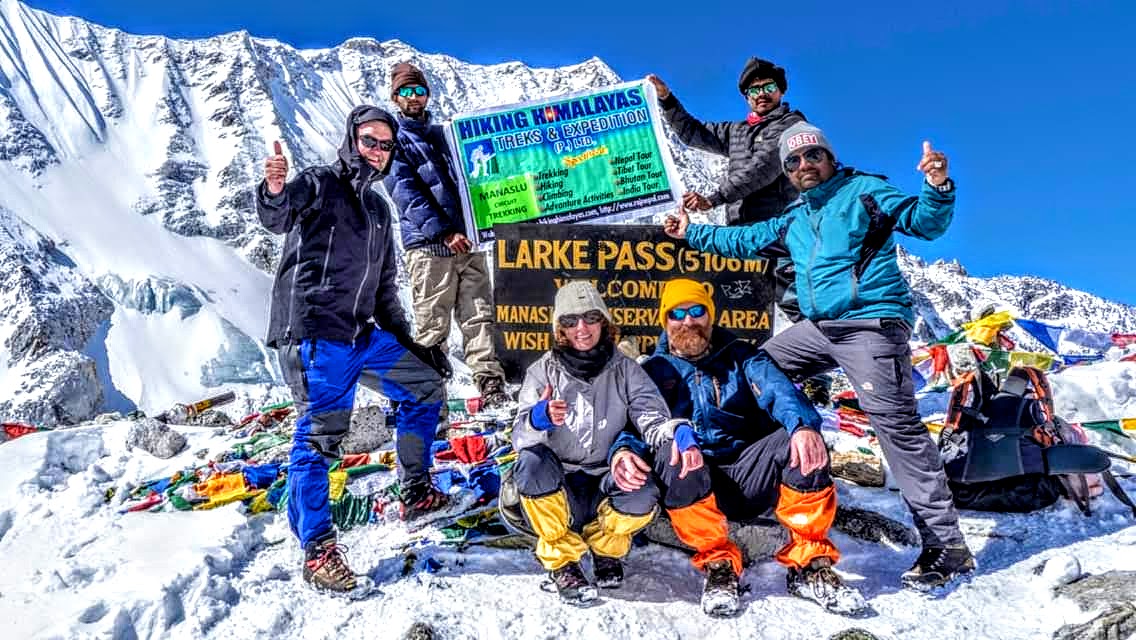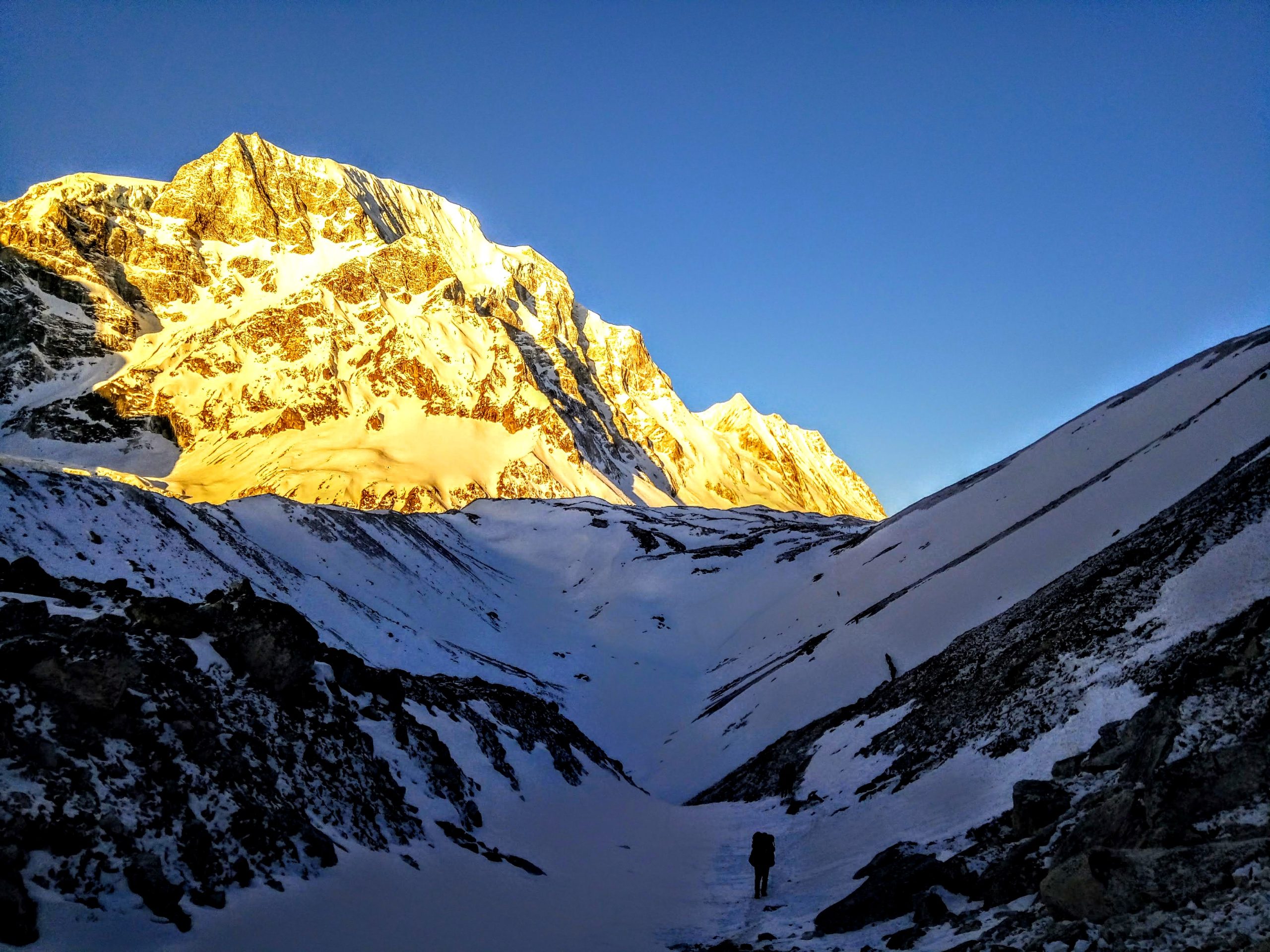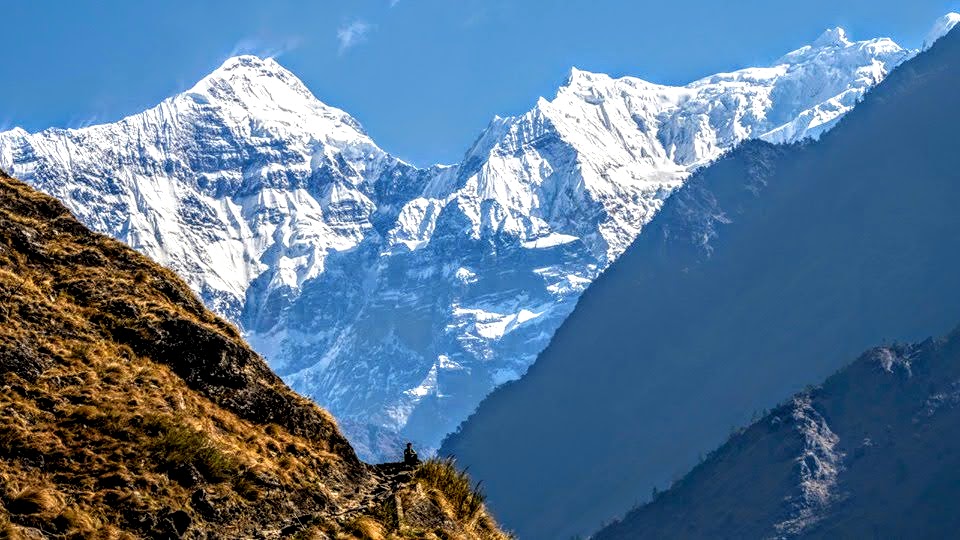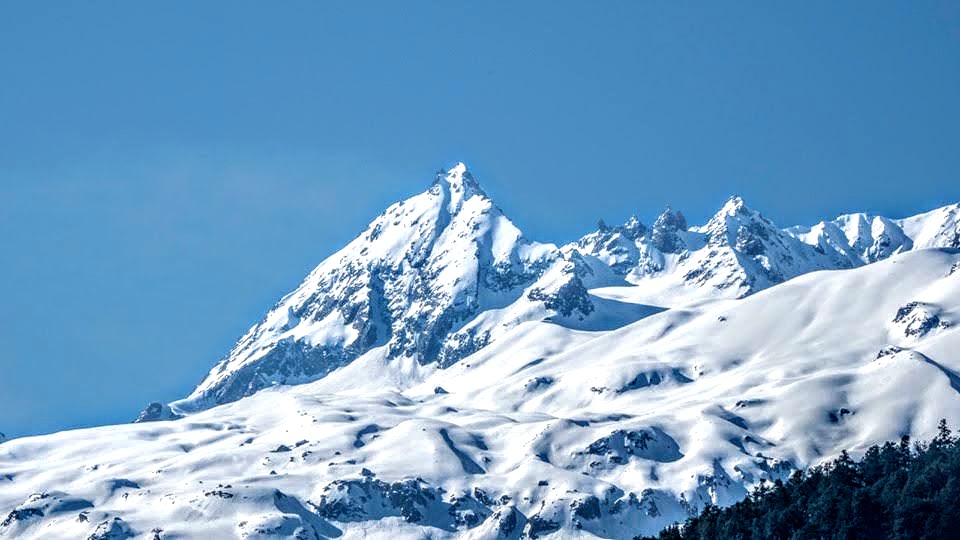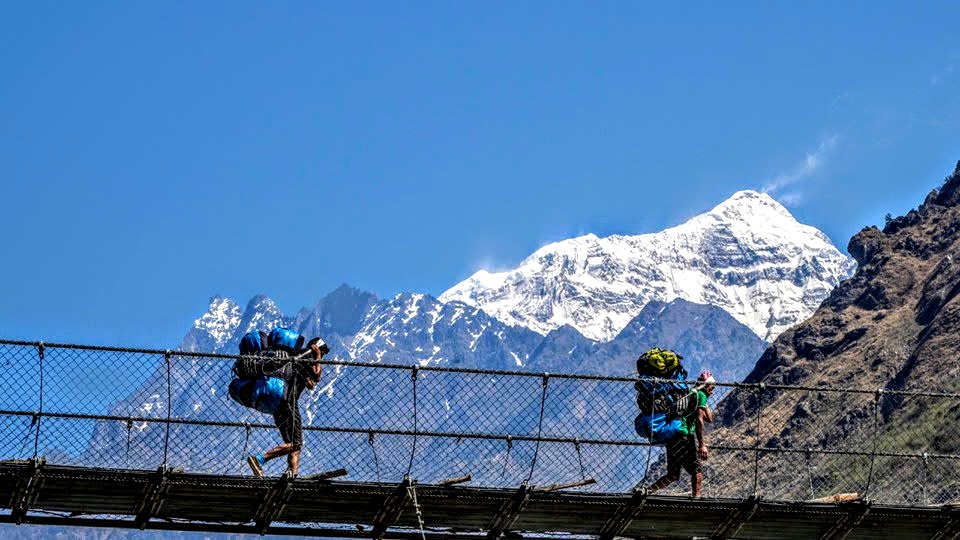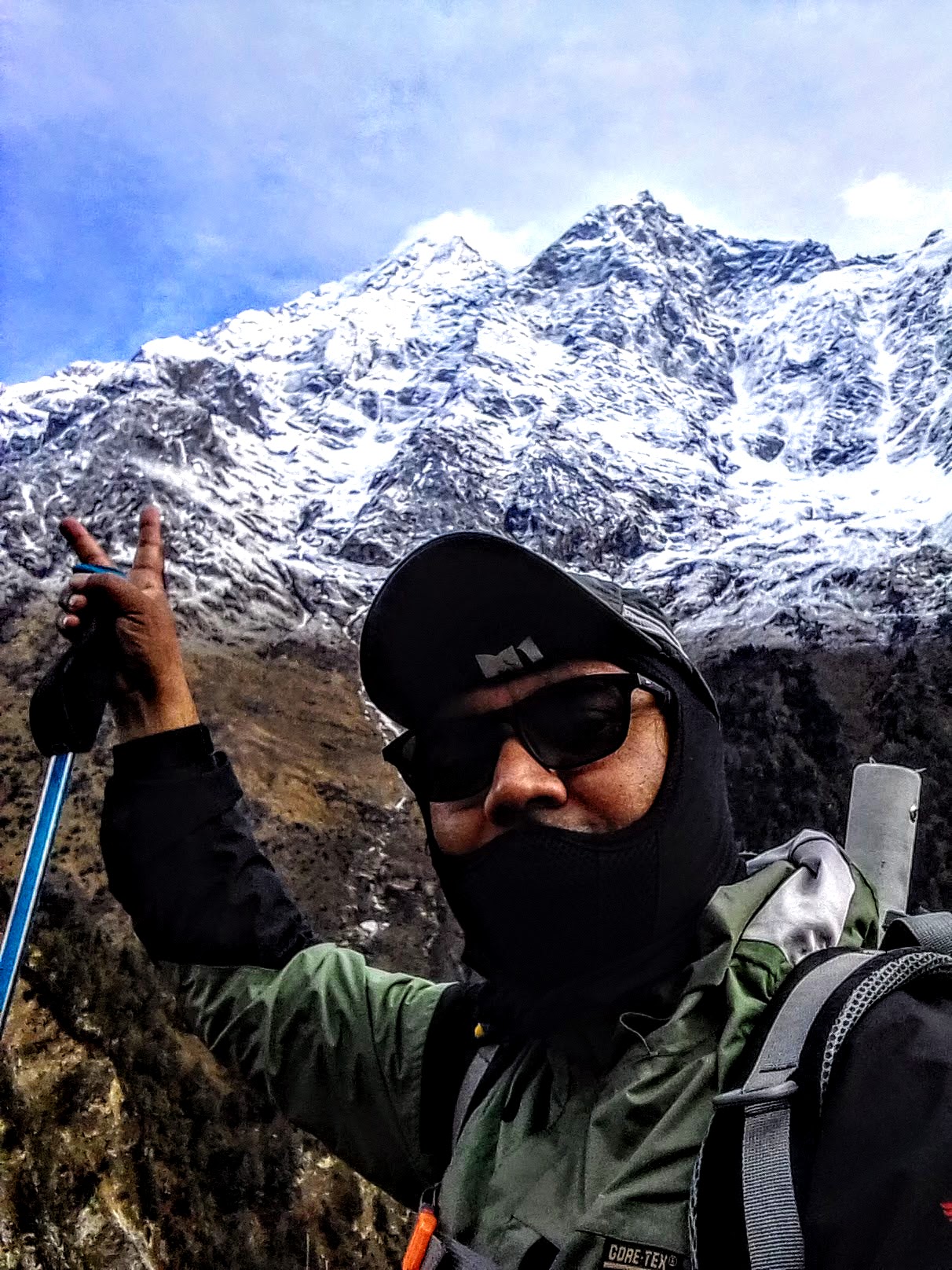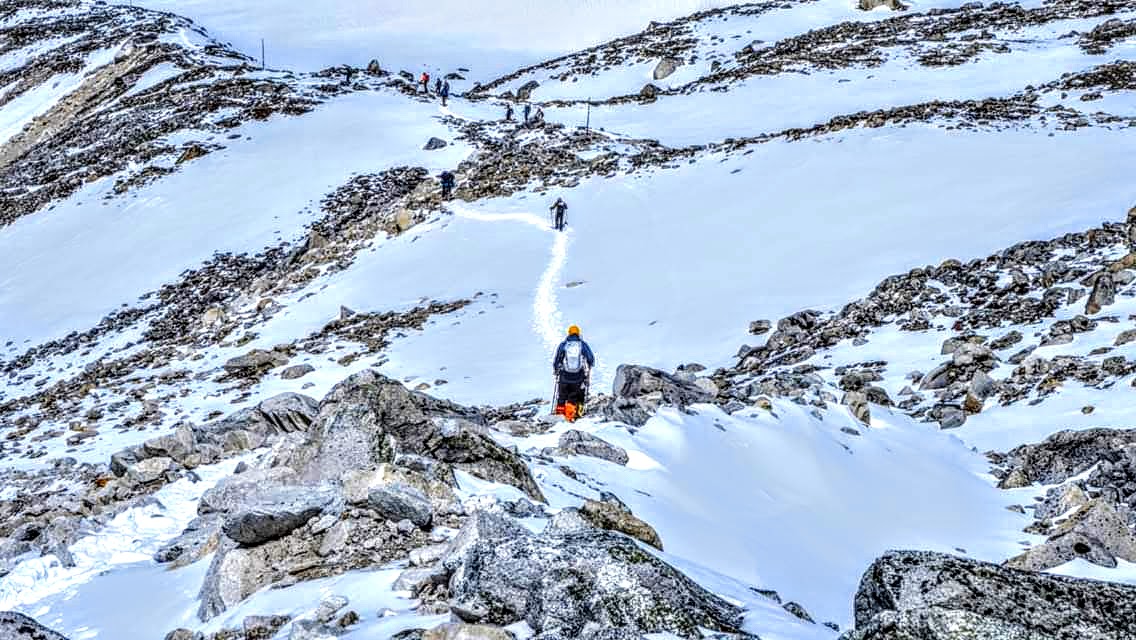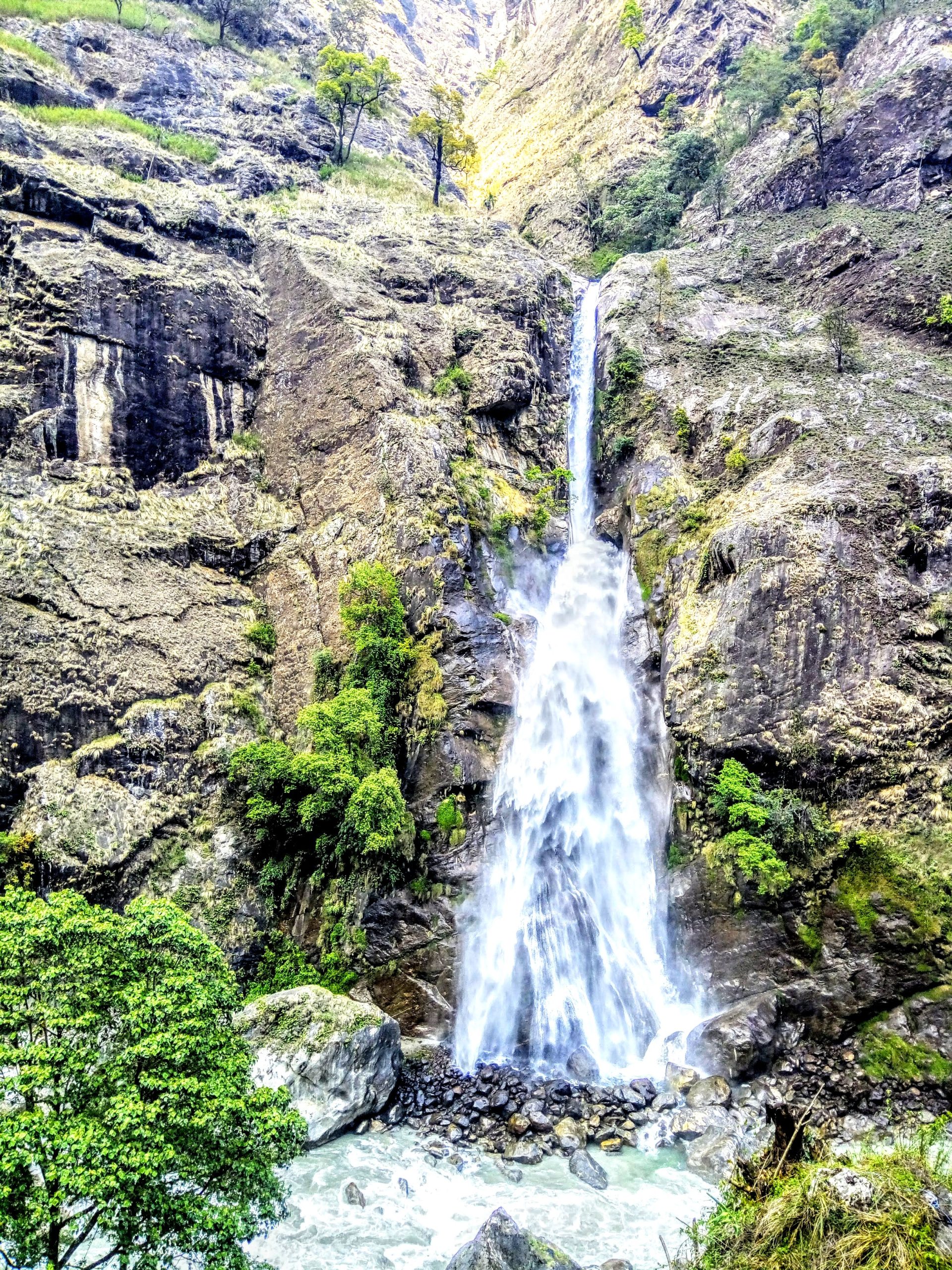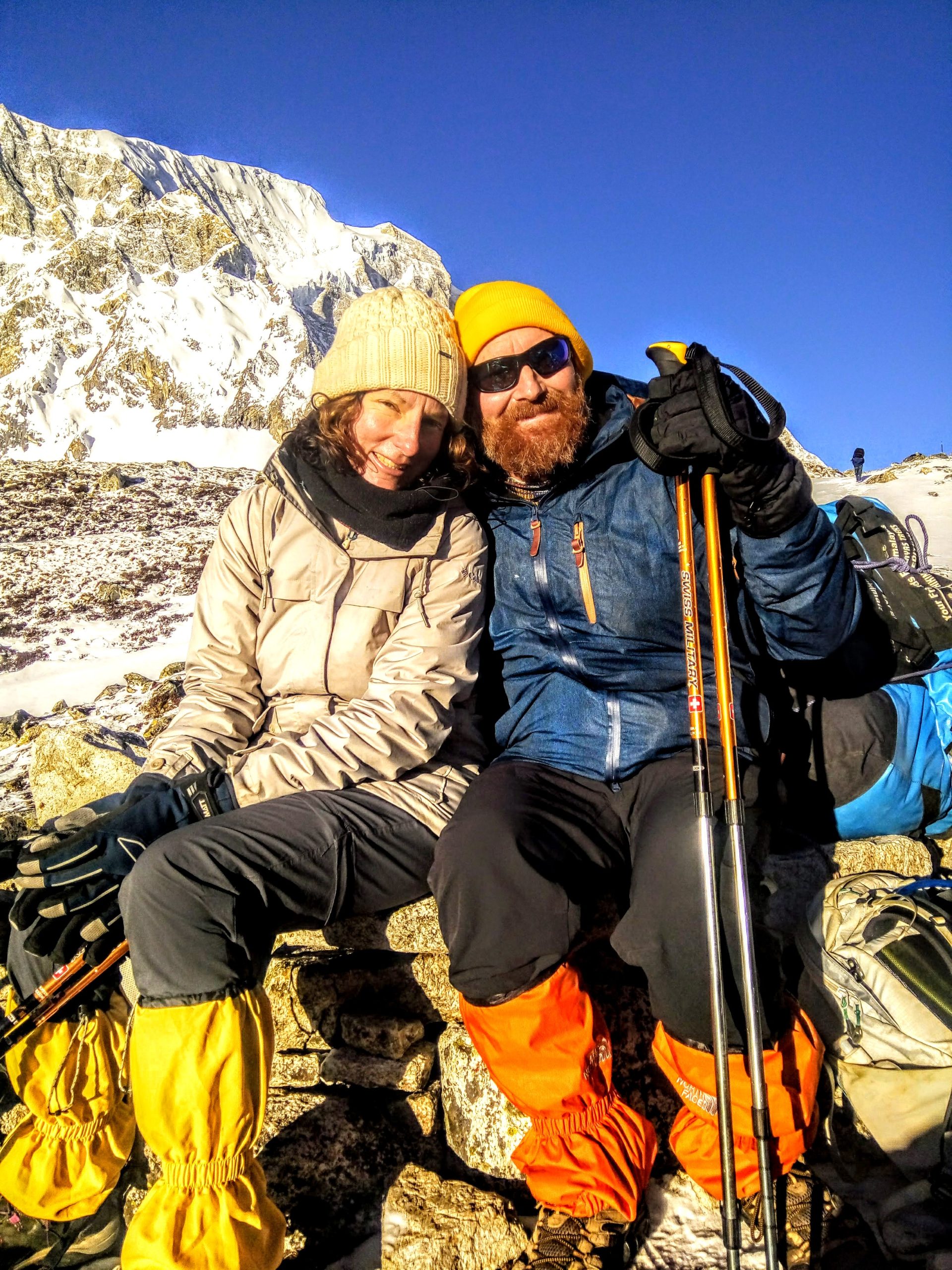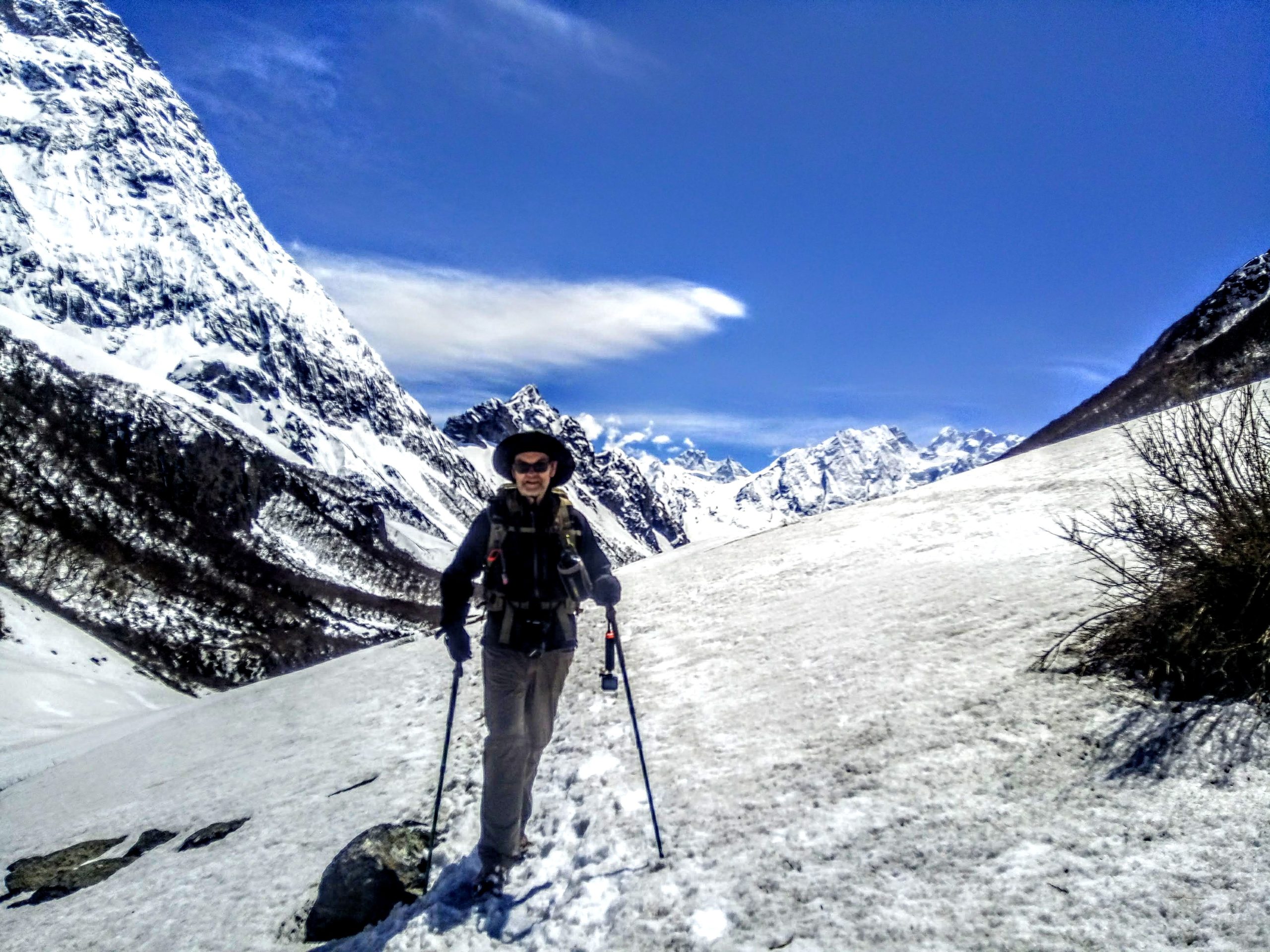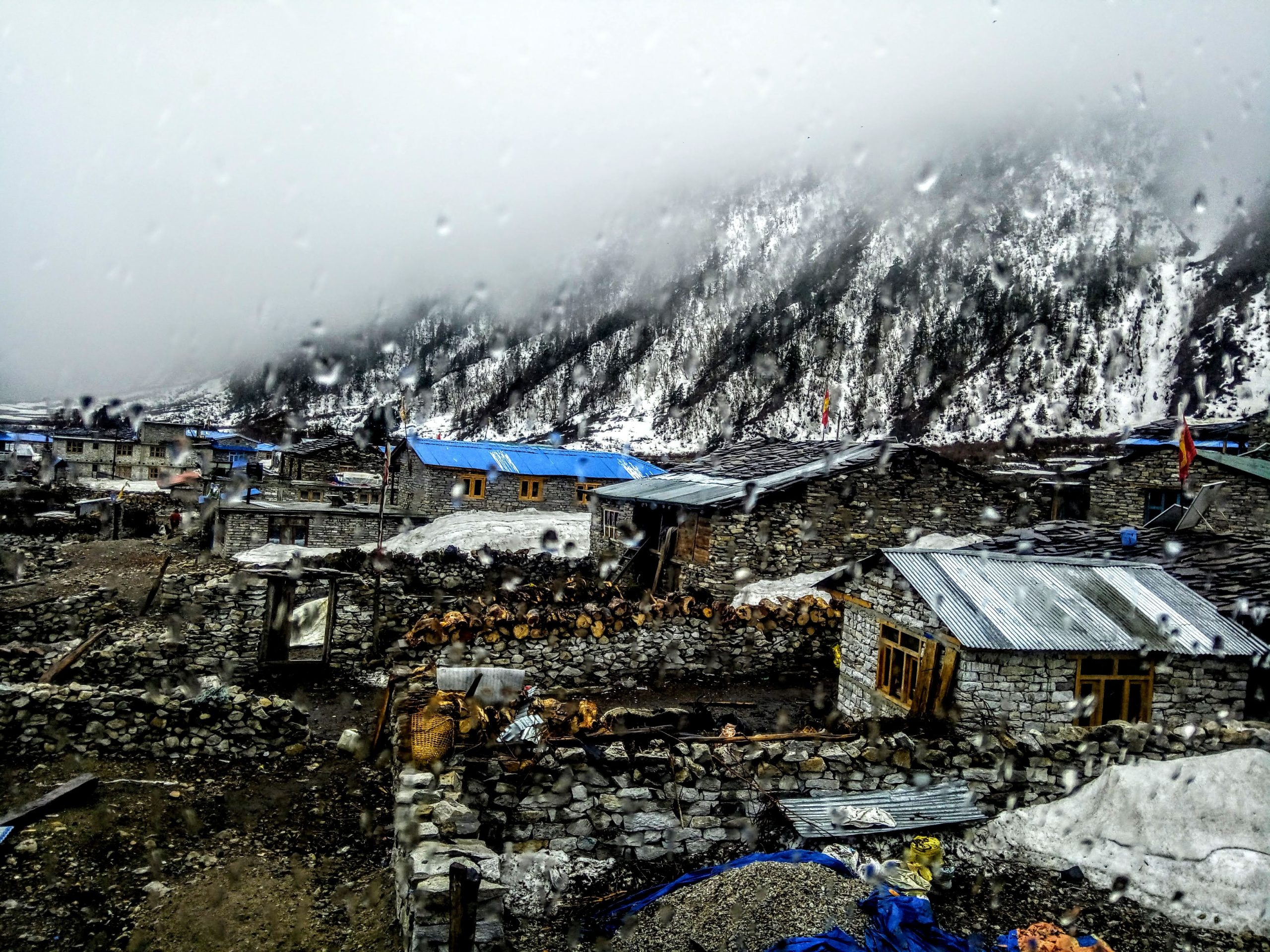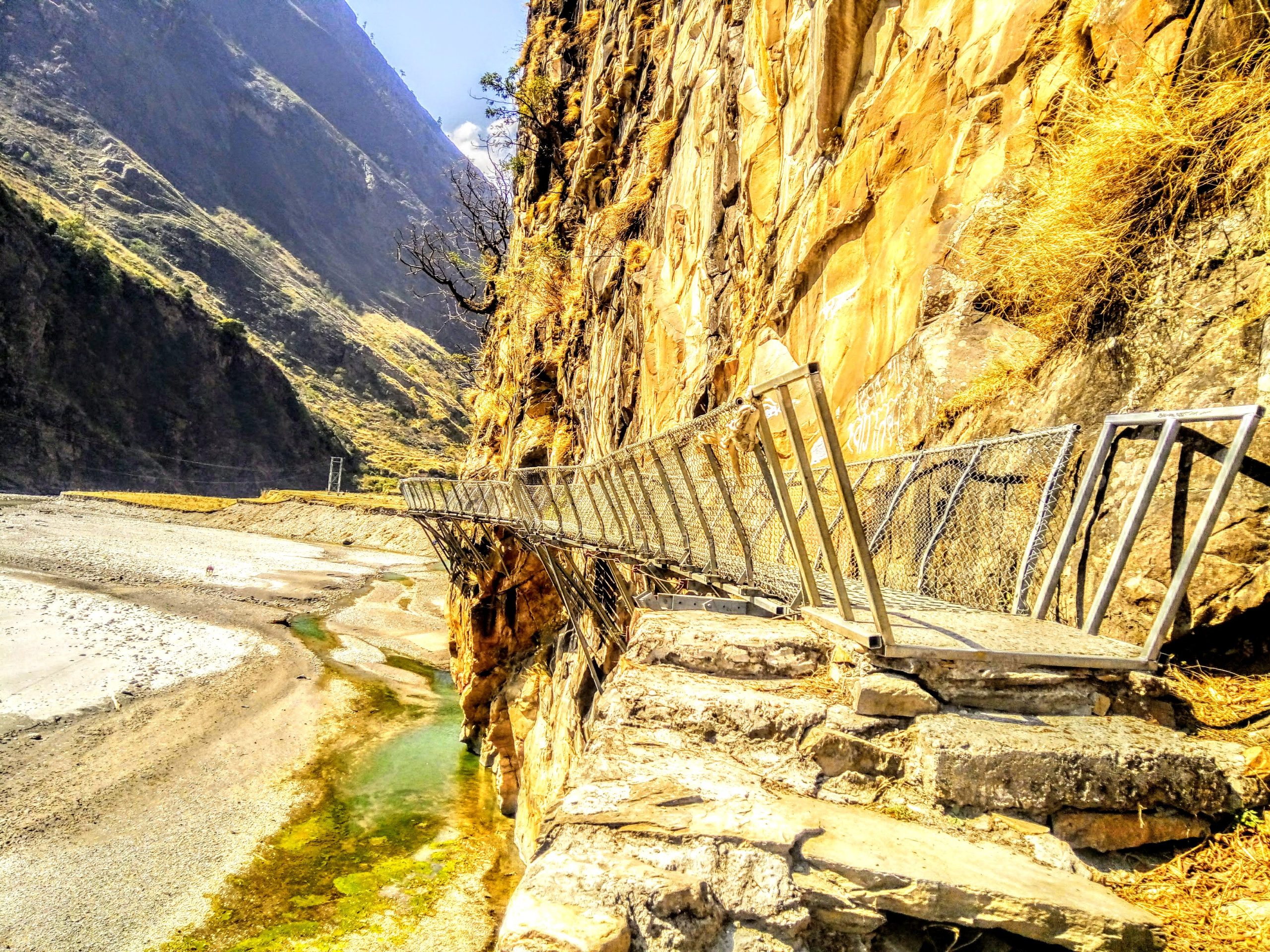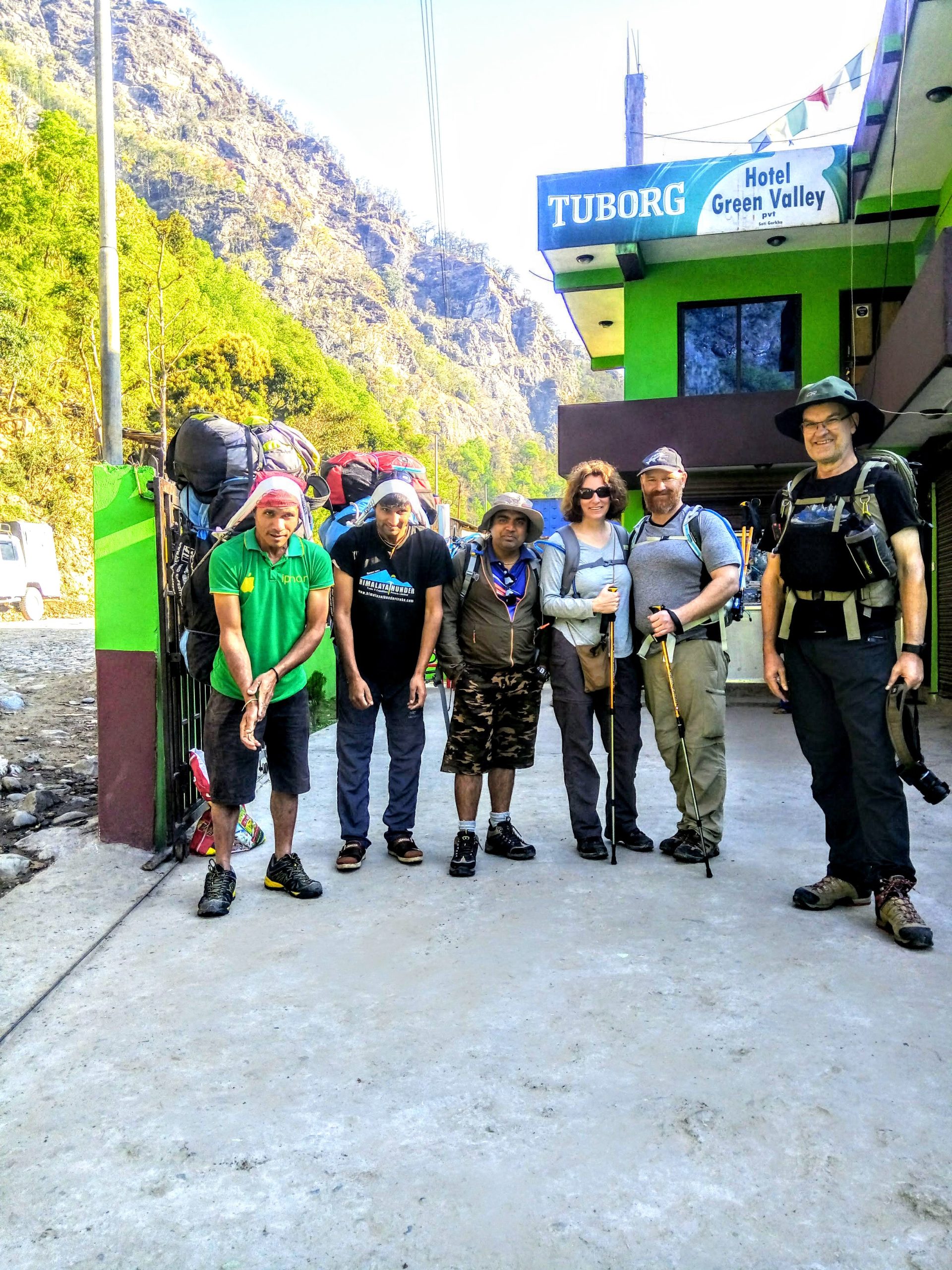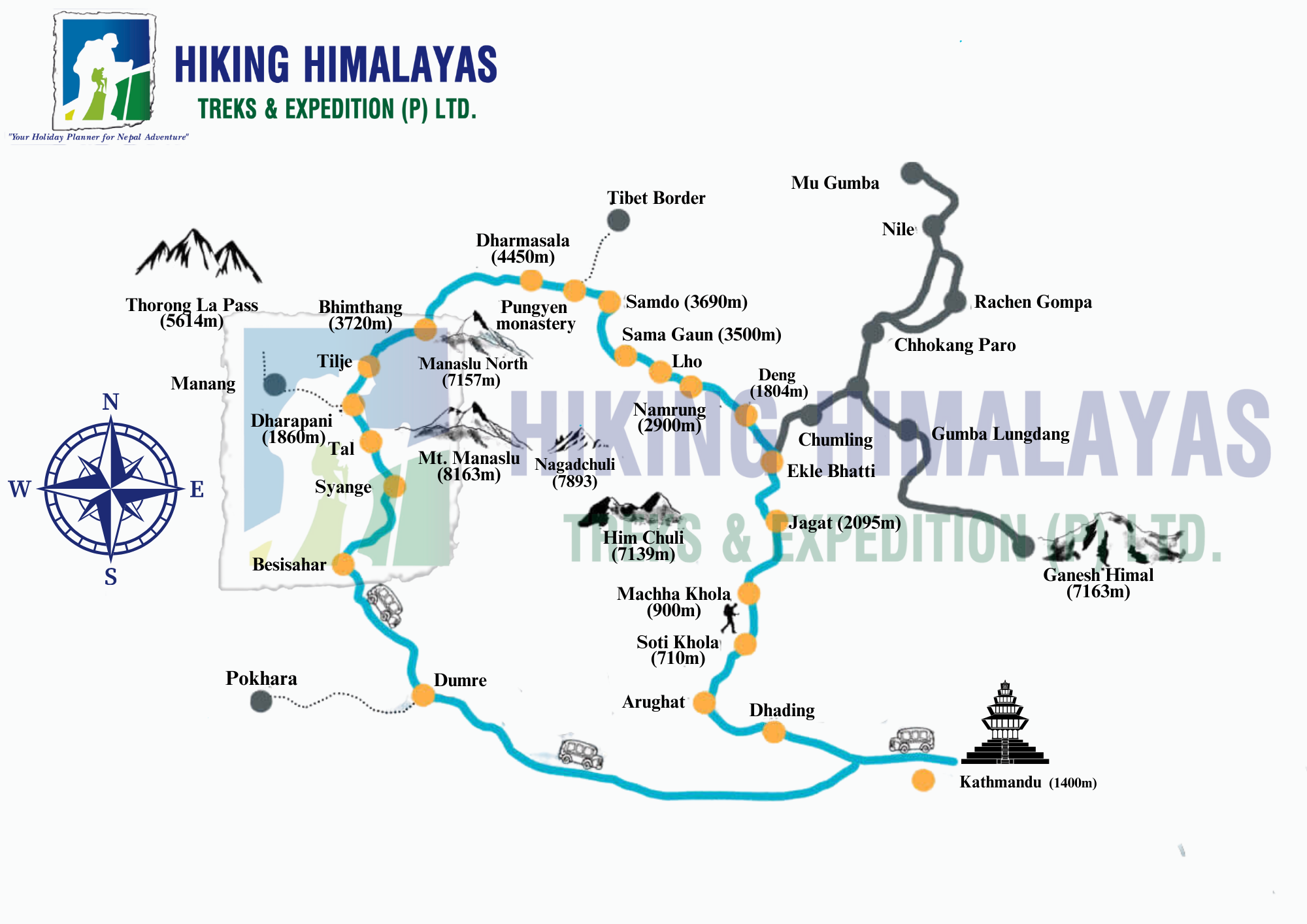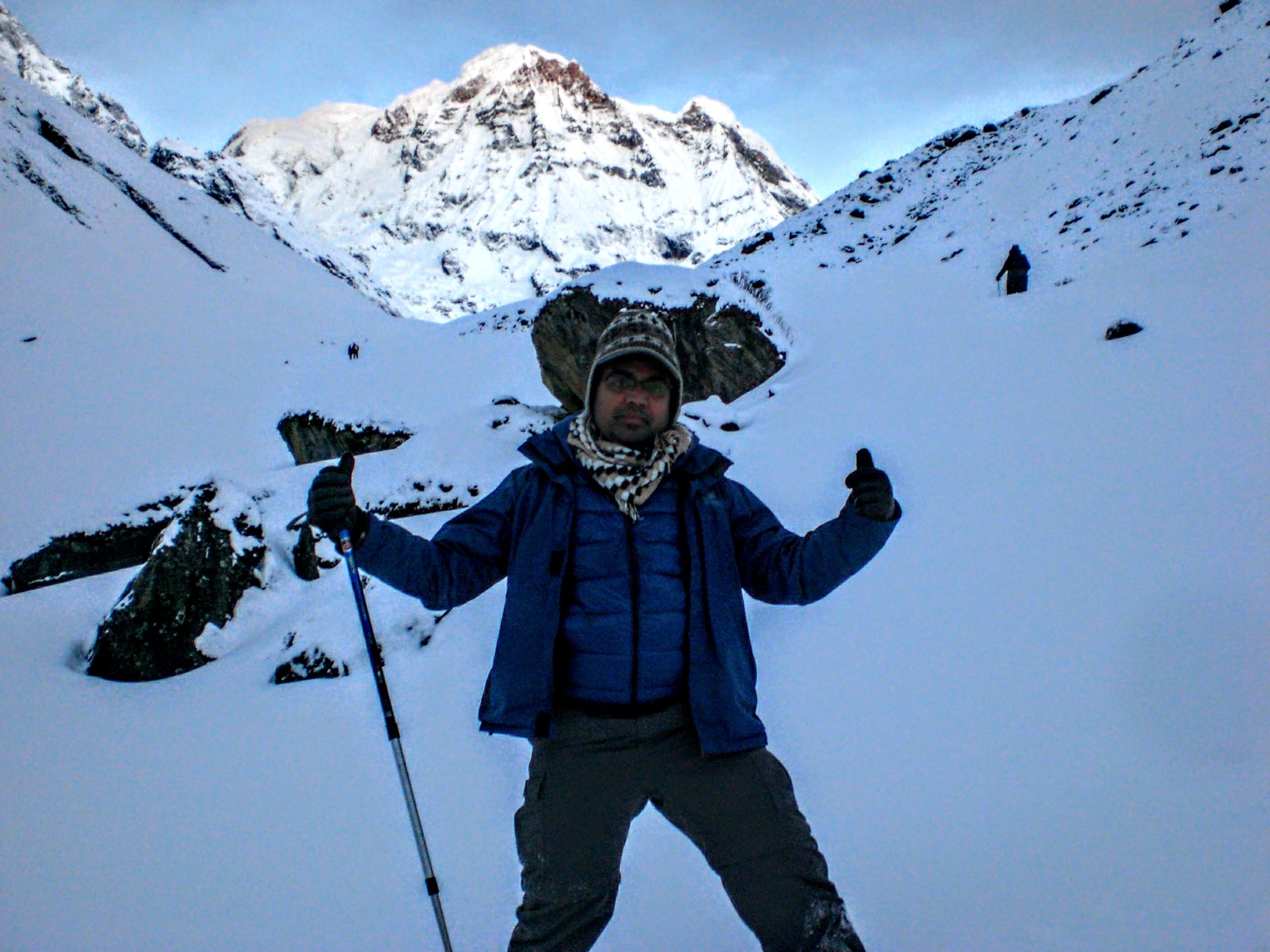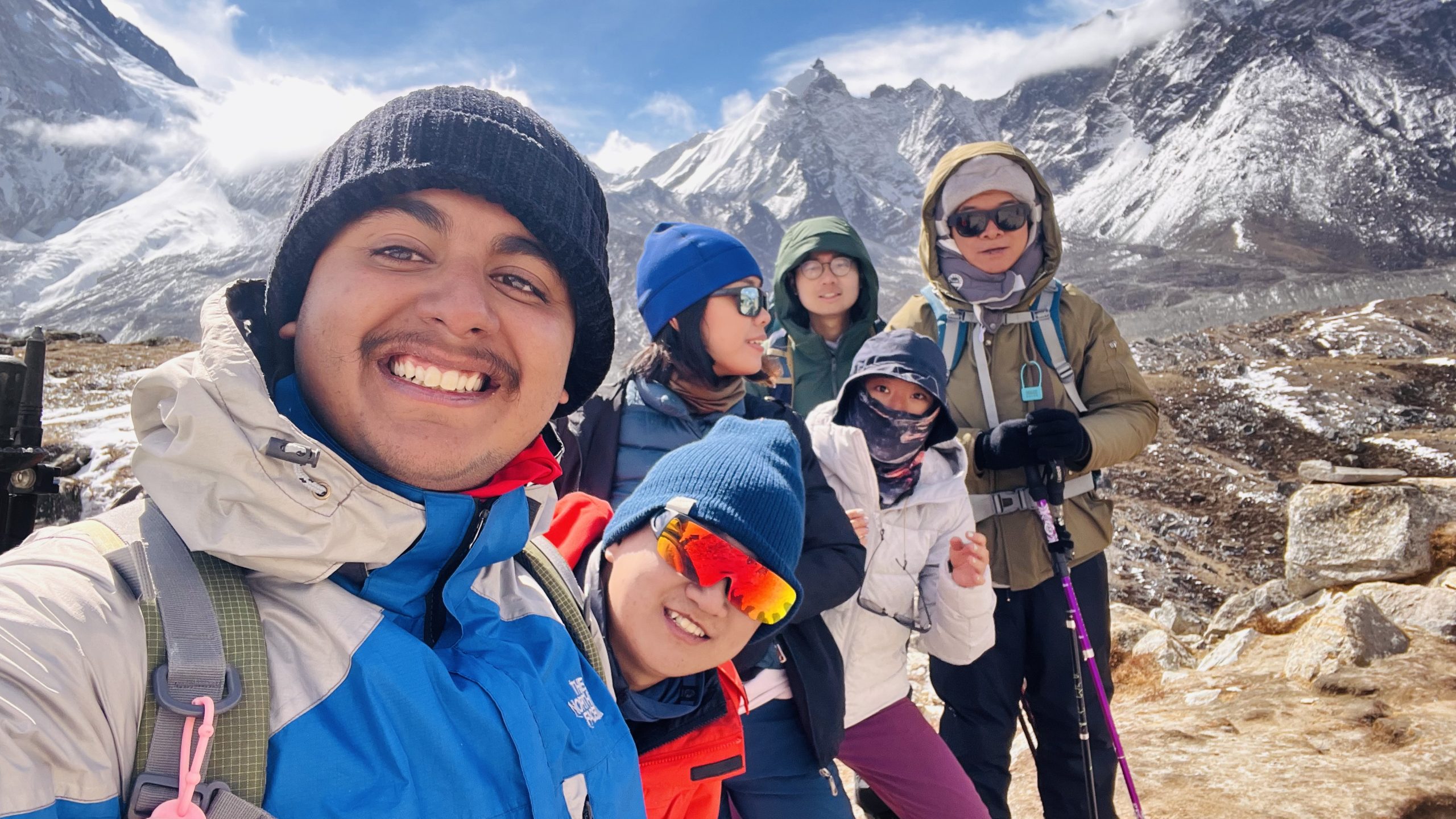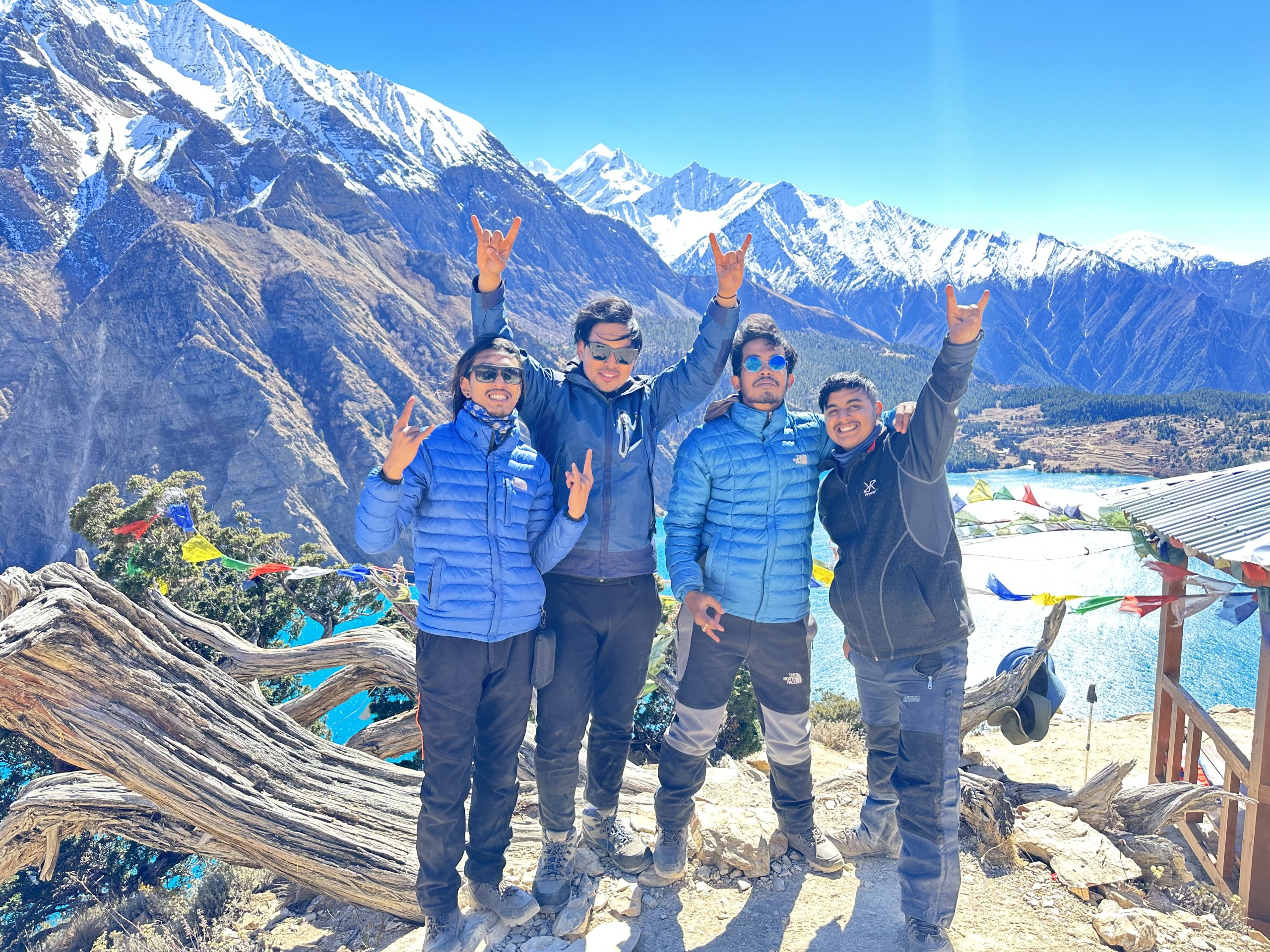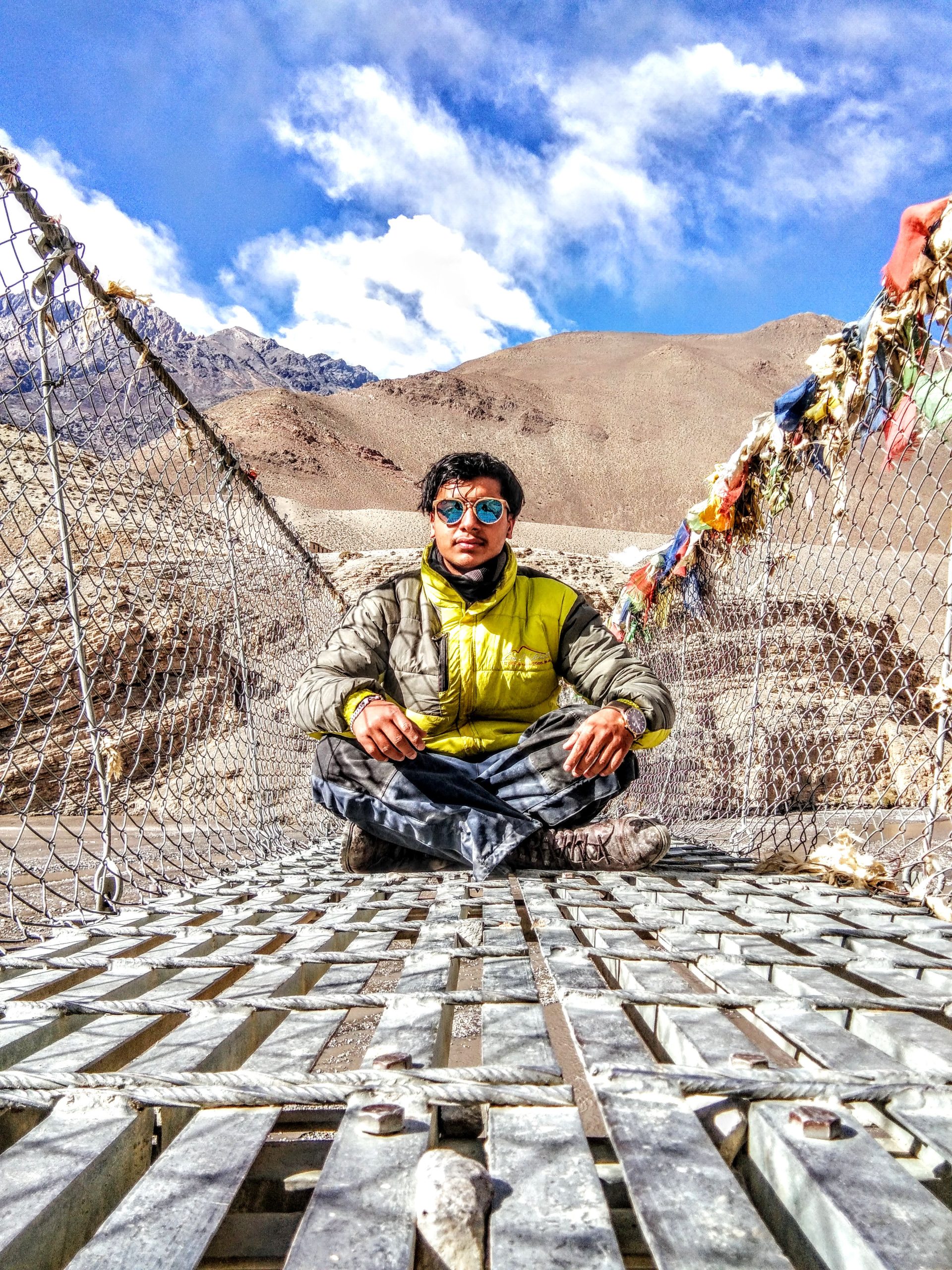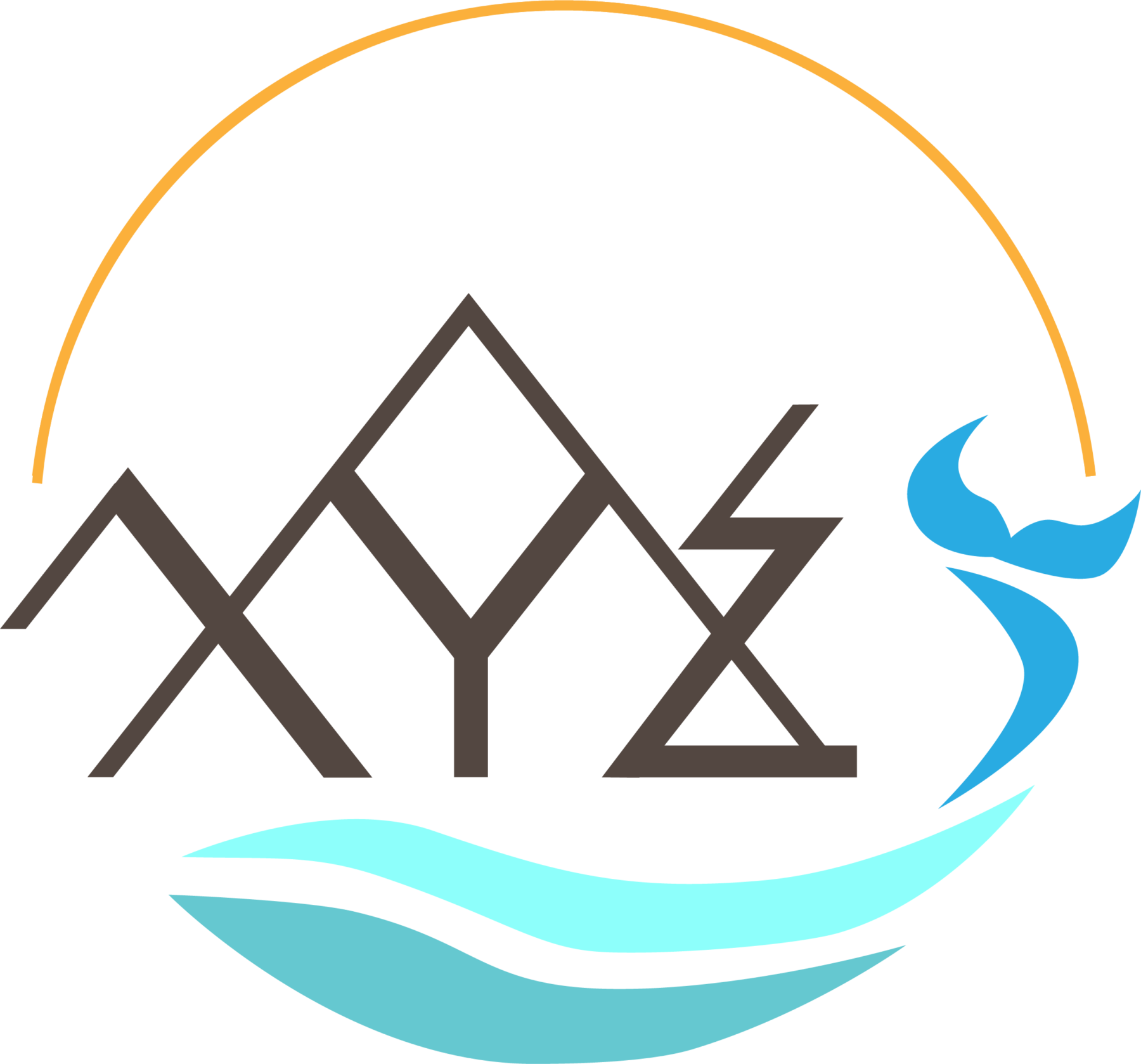Good to Know
- LOCATION
- Manaslu , Region
- DURATION
- 16 Days
- Difficulty Level
- streneous
- ARRIVAL ON
- Kathmandu , Nepal
- DEPARTURE FROM
- Kathmandu , Nepal
- TRIP TYPE
- treking
- MAX ALTITUDE
- 5160 meters/16929 feet
- GROUP SIZE
- 2-10
- MEAL
- Breakfast - Lunch - Dinner
- ACCOMMODATION
- Tea House
- TRANSPORTATION
- Drive
- TRIP CODE
- HHT MCT
Manaslu Circuit Trek
Trekking Overview and Trip Information
Manaslu Circuit Trek is a captivating journey through the remote and pristine landscapes of the Manaslu region in Nepal. Offering a perfect blend of natural beauty, cultural richness, and adventure, this trek has gained popularity as a less crowded alternative to the Annapurna and Everest regions. Here’s essential trip information for foreign traveler’s planning to embark on this remarkable expedition. Manaslu(8,156m) is the world’s eighth-highest peak. From the Hindu middle hills culture to the Tibetan high-country dwellers, the Manaslu Circuit trek in the heart of the Nepal Himalaya is a cultural trek par excellence, without a doubt one of the best treks in Nepal. Manaslu, ‘The Mountain of the spirit’ and from Upper Nubri must be one of the most beautiful ones; the spectacular mountain scenery has to be seen to be believed. We trek the classic high trek around Manaslu from the historic town of Gorkha, with its wonderful durbar(palace), to Kutang in Lower Manaslu and on to Upper Nubri, where trade with Tibet continues as it has for hundreds of years. We experience incredible mountain panoramas after the first few days and add extra days at the most beautiful villages before the Larkya La (pass). The diverse Tibetan culture, spectacular scenery, and snow peaks of the Manaslu Himal Circuit make it one of the most interesting, as well as one of the most challenging, treks in Nepal. Manaslu Circuit offers everything from grasslands filled with colorful flowers and beautiful countryside villages to high passes and Himalayan valleys. The diverse Tibetan culture, spectacular scenery, and snow peaks seen from the Manaslu Circuit make it one of the most interesting, as well as one of the most challenging treks in Nepal.
Geographical knowledge of the land you will tread:
Manaslu Circuit Trek takes you through a diverse range of geographical features and landscapes in the remote Manaslu region of Nepal. Here is some geographical knowledge of the land you will tread during the trek:
- 1. Manaslu Himal: The trek is named after Mount Manaslu, the eighth-highest peak in the world at 8,163 meters (26,781 feet). This imposing mountain dominates the landscape and serves as the centerpiece of the trek.
- 2. Manaslu Conservation Area: The trek is situated within the Manaslu Conservation Area, a protected region covering approximately 1,663 square kilometers. This area is renowned for its biodiversity, including various endangered species like the snow leopard, red panda, and Himalayan tahr.
- 3. Budhi Gandaki River: The trail follows the Budhi Gandaki River, a major tributary of the Gandaki River system. The river flows through steep-sided valleys and gorges, creating dramatic landscapes.
- 4. Larke Pass: The highest point of the trek is the Larke Pass, located at an altitude of 5,106 meters (16,752 feet). This pass is a geographical highlight and offers stunning panoramic views of the surrounding mountains.
- 5. Alpine Meadows: As you ascend through the valley, you’ll encounter pristine alpine meadows surrounded by towering peaks. These meadows are often dotted with colorful wildflowers during the trekking season.
- 6. Terraced Fields: In lower altitudes, the landscape transforms into terraced fields where local communities grow crops like rice, maize, and barley. These terraces are a testament to the ingenuity of the local farmers.
- 7. Glacial Moraines: The trek passes through areas with glacial moraines, consisting of rocks, debris, and boulders deposited by glaciers. These formations are a testament to the region’s geological history.
- 8. Traditional Villages: Along the trail, you’ll encounter traditional Nepalese villages, such as Soti Khola, Machha Khola, and Samagaon, nestled amidst the rugged terrain. These villages offer a glimpse into the unique lifestyle of the local communities.
- 9. Manaslu Base Camp (Optional): For those seeking a more challenging extension to the trek, a visit to Manaslu Base Camp is possible. This allows you to get closer to the massive glaciers and icefalls of Manaslu.
- 10. Subtropical to Alpine Zones: The trek spans a wide range of altitudes, from subtropical forests to alpine zones. As you ascend, you’ll notice changes in vegetation and climate.
The Manaslu Circuit Trek is celebrated for its geographical diversity, ranging from lush forests and terraced fields to high mountain passes and glacial terrain. This, combined with its cultural richness, makes it an incredible trekking destination in the heart of the Manaslu region of Nepal.
Trail Overview and Cultural Experience Along the Manaslu Circuit Trek:
- 1. Starting Point: The trek typically starts in Soti Khola, accessible by a scenic drive from Kathmandu. From here, you’ll begin your ascent along the Budhi Gandaki River.
- 2. Diverse Landscapes: The trail takes you through a wide range of landscapes, from subtropical forests and terraced fields in the lower elevations to rugged terrain and alpine meadows as you ascend higher.
- 3. Suspension Bridges: You’ll cross numerous suspension bridges, some swaying gently above the river below. These bridges add an element of excitement to the trek.
- 4. Challenging Pass: The highlight of the trek is crossing the Larke Pass (5,106 meters), a challenging high-altitude pass that offers stunning panoramic views of the surrounding Himalayan peaks.
- 5. Budhi Gandaki River: Throughout the trek, you’ll follow the Budhi Gandaki River, which carves through deep gorges and valleys. The sound of the rushing river accompanies you on your journey.
Cultural Experience in manaslu Circiut Trek:
- 1. Ethnic Communities: The Manaslu region is home to diverse ethnic communities, including the Nubri and Tsum people. These communities have their own distinct cultures, languages, and traditions.
- 2. Traditional Villages: Along the trail, you’ll pass through traditional villages like Machha Khola, Jagat, Samagaon, and Samdo. These villages are characterized by stone-built houses, prayer flags, and warm hospitality.
- 3. Monasteries and Gompas: The trek provides opportunities to visit Buddhist monasteries and gompas, such as the Ribung Gompa in Deng and the Mu Gompa in the Tsum Valley. These monastic sites offer insights into the spiritual life of the region.
- 4. Local Cuisine: You’ll have the chance to savor local cuisine, including dal bhat (rice and lentils), momos (dumplings), and Tibetan bread. Sharing meals in tea houses allows for cultural exchange with fellow trekkers and locals.
- 5. Cultural Festivals: Depending on the timing of your trek, you may have the opportunity to witness local festivals and celebrations, which often involve colorful processions, music, and dance.
- 6. Tamang and Tibetan Influence: The culture of the Manaslu region is influenced by both Tibetan and Nepali traditions. You’ll find elements of Tibetan Buddhism, prayer wheels, and mani walls along the way.
- 7. Warm Hospitality: The locals are known for their warm hospitality, and many tea houses are run by local families. You’ll have the chance to interact with the residents and learn about their way of life.
The Manaslu Circuit Trek offers a captivating journey through ever-changing landscapes and a rich tapestry of cultures. It’s a perfect blend of natural beauty and cultural immersion, making it an unforgettable adventure in the heart of the Manaslu region of Nepal.
Trip Duration:
The standard duration for the Manaslu Circuit Trek is around 14-16 days, which includes the trek itself and travel to and from Kathmandu, Nepal’s capital.
Best Time to Trek:
The ideal trekking seasons are spring (March to May) and autumn (September to November) when the weather is stable, skies are clear, and temperatures are moderate.
Permits:
Trekkers will need special permits for the Manaslu region. These permits can be obtained through your trekking agency and cover park fees and conservation charges.
Guided vs. Independent Trek:
Both guided and independent treks are possible. Guided treks offer experienced guides who provide local insights, assist with logistics, and ensure safety. Independent trekkers should be well-prepared and familiar with the trail.
Physical Fitness:
The Manaslu Circuit Trek is considered moderately challenging, and trekkers should have a reasonable level of physical fitness. Prior hiking experience and cardiovascular fitness will enhance your experience.
Packing List:
Pack essentials such as appropriate clothing, a reliable daypack, trekking boots, and a sleeping bag. Consult with your trekking agency for a detailed packing list tailored to the season.
Altitude Considerations:
Altitude sickness is a potential concern. Trekking itineraries typically include acclimatization days to help your body adjust gradually. Listen to your guide’s advice and monitor your health closely.
Safety:
Travel insurance covering high-altitude trekking and emergency evacuation is crucial. Follow your guide’s instructions, stay informed about weather conditions, and be prepared for changing circumstances.
Facilities and Accommodation along the Manalsu Circuit Trek
Accommodation and facilities along the Manaslu Circuit Trek are essential for trekkers to enjoy a comfortable and safe journey through the remote Himalayan landscapes. Here’s an overview of what you can expect in terms of facilities and lodging options:
- 1. Tea Houses and Lodges:
– The primary form of accommodation on the Manaslu Circuit Trek is tea houses and lodges, which are family-run guesthouses catering to trekkers.
– These lodges offer basic but cozy rooms with twin beds and shared bathroom facilities.
– Accommodations range from rustic to more comfortable, and the quality may vary from one lodge to another. - 2. Dining:
– Tea houses and lodges provide dining facilities where trekkers can enjoy three meals a day.
– Meals typically include a variety of options, such as Nepali, Tibetan, and international dishes like pasta, pizza, and rice and curry.
– Be prepared for limited food choices at higher altitudes, where the menu may become more basic. - 3. Hot Showers:
– Hot showers are available in some tea houses, but they often come with an additional fee.
– At higher altitudes, the availability of hot water may be limited due to the challenges of heating water at altitude. - 4. Electricity and Charging:
– Many tea houses offer charging facilities for electronic devices, such as smartphones and cameras, for a fee.
– Power supply can be unreliable, especially at higher elevations, so it’s advisable to bring backup power sources like portable chargers. - 5. Wi-Fi and Internet:
– Wi-Fi is available in some tea houses, primarily in lower-altitude villages. However, the internet connection can be slow and intermittent.
– Keep in mind that trekking is an opportunity to disconnect from the digital world and immerse yourself in the natural surroundings. - 6. Toilets:
– Toilet facilities in tea houses and lodges vary, ranging from basic squat toilets to sit-down toilets with flushes.
– As you ascend higher into the mountains, expect more basic facilities, including outdoor toilets. - 7. Clean Drinking Water:
– Safe drinking water is essential during the trek. Trekkers are encouraged to use water purification tablets or filters to treat tap water or water from natural sources.
– Many lodges also offer boiled water for a fee. - 8. Supplies and Gear:
– Trekking gear, snacks, and other supplies can be purchased in villages along the route, but prices may increase at higher altitudes.
– It’s advisable to stock up on essentials in lower-altitude towns before starting the trek. - 9. Medical Facilities:
– Basic medical facilities and pharmacies are available in some villages, but their supplies may be limited.
– It’s wise to carry a basic first-aid kit and any necessary medications with you.
Can Beginners Trek to Manaslu Circuit Trek
Beginners can certainly embark on the Manaslu Circuit Trek, but it’s important to approach it with careful planning and realistic expectations. This trek is considered moderately difficult due to its high altitudes, challenging terrain, and remote nature. As a beginner, you should prioritize physical fitness and endurance through pre-trek training. Understanding the risks associated with altitude sickness and the importance of acclimatization is crucial for a safe journey. Joining a guided trek with experienced guides can provide valuable support, safety guidance, and cultural insights. While beginners can successfully complete this trek, being well-prepared both physically and mentally, as well as having an awareness of the trek’s demands, will contribute to a more enjoyable and fulfilling experience amidst the stunning landscapes and rich culture of the Manaslu region.
Alternative Treks You Can Consider in Manaslu Circiut Trek
The Manaslu Circuit Trek is a fantastic adventure, but if you’re looking for alternative treks in Nepal, there are several excellent options to consider. These treks offer diverse landscapes and cultural experiences. Here are some alternatives:
1. Tsum Valley Trek:
– This trek takes you to the sacred Tsum Valley, known as the “Hidden Valley.” It’s a culturally rich journey through remote Tibetan Buddhist villages and monasteries.- 2. Langtang Valley Trek:
– If you prefer a shorter trek closer to Kathmandu, the Langtang Valley Trek offers stunning mountain views, lush forests, and cultural experiences with Tamang and Sherpa communities. - 3. Gosaikunda Lake Trek:
– This trek leads to the pristine Gosaikunda Lake, a sacred alpine lake surrounded by breathtaking mountain scenery. It’s ideal for those seeking a shorter trek with a spiritual touch. - 4. Upper Mustang Trek:
– Located in the restricted Upper Mustang region, this trek offers a unique experience in a Tibetan-influenced desert-like landscape with ancient caves, monasteries, and walled villages. - 5. Annapurna Circuit Trek:
– The Annapurna Circuit Trek is one of Nepal’s classic treks, offering a diverse range of landscapes from subtropical forests to high desert plateaus. It encircles the Annapurna Massif. - 6. Kanchenjunga Circuit Trek:
– For a more remote and challenging trek, consider the Kanchenjunga Circuit. It takes you to the base of Kanchenjunga, the third-highest mountain in the world, and offers rich biodiversity. - 7. Everest Three Passes Trek:
– If you’re drawn to the Everest region but want a more challenging trek, the Everest Three Passes Trek takes you over three high mountain passes and offers spectacular views. - 8. Makalu Base Camp Trek:
– This trek explores the Makalu-Barun National Park, home to diverse flora and fauna. It leads to the base camp of Mount Makalu, the fifth-highest peak globally. - 9. Dolpo Trek:
– Dolpo is a remote and culturally rich region in western Nepal. The Dolpo Trek takes you through high mountain valleys and ancient Tibetan villages. - 10. Rara Lake Trek:
– Rara Lake is the largest lake in Nepal, located in the remote northwestern region. The trek offers pristine natural beauty and encounters with indigenous Thakuri communities.
Each of these treks has its own unique charm, offering a different perspective of Nepal’s natural beauty and cultural diversity. When choosing an alternative trek, consider factors like trekking duration, difficulty, and the type of experience you’re seeking to find the one that suits your preferences and interests best.
The Manaslu Circuit Trek is an extraordinary journey that offers a pristine and culturally rich alternative to more crowded trekking routes in Nepal. Proper planning, physical preparation, and the guidance of experienced professionals ensure a safe and memorable adventure through the captivating landscapes of the Manaslu region.
Highlights
- 1. Spectacular Mountain Views: The trek offers stunning views of the Manaslu range, including Manaslu itself, the eighth highest peak in the world. You’ll also see other prominent peaks like Himlung Himal, Annapurna II, and Ganesh Himal.
- 2. Cultural Diversity: The trek takes you through several remote villages inhabited by various ethnic groups, such as the Nubri and Tsum people. You’ll have the opportunity to interact with locals, experience their unique cultures, and visit ancient monasteries and gompas.
- 3. Larkya La Pass: Crossing the Larkya La Pass at 5,160 meters (16,930 feet) is one of the trek’s highlights. It’s a challenging high-altitude pass that rewards trekkers with breathtaking panoramic views and a sense of accomplishment.
- 4. Natural Beauty: The trail passes through lush forests, terraced fields, pristine rivers, and serene alpine meadows. You’ll also encounter hot springs in places like Tatopani, providing a relaxing break.
- 5. Wildlife: The Manaslu Conservation Area is home to various wildlife species, including the elusive snow leopard, Himalayan tahr, red panda, and many bird species. While sightings are rare, the trek offers a chance to appreciate Nepal’s diverse wildlife.
- 6. Less Crowded: Compared to the Annapurna and Everest regions, the Manaslu Circuit is less crowded, offering a quieter and more remote trekking experience.
- 7. Challenging Terrain: The trek offers a mix of terrain, from gentle forested paths to steep ascents and descents. This diversity keeps the trek engaging and challenging.
- 8. Cultural Exploration: You’ll have the opportunity to visit traditional Tibetan Buddhist monasteries, prayer wheels, and mani walls, providing insight into the spiritual and cultural heritage of the region.
- 9. Unique Tsum Valley: The Tsum Valley is a hidden gem within the Manaslu Circuit Trek. It’s a sacred Himalayan valley with its own distinct culture and traditions, and it’s an extension that adds depth to the trek.
- 10. Local Cuisine: Enjoy delicious local Nepali and Tibetan cuisine along the way, including momos, thukpa, and yak-based dishes.
- 11. Warm Hospitality: The people of the Manaslu region are known for their warm hospitality, making the trek a culturally enriching experience.
- 12. Sense of Isolation: If you’re seeking a trek that offers a sense of isolation and a connection with nature, the Manaslu Circuit provides this, especially in comparison to the more popular trekking destinations in Nepal.
Remember that trekking in the Manaslu region requires a special trekking permit, and it’s important to check the latest regulations and obtain the necessary permits before embarking on this adventure. Additionally, it’s recommended to trek with a licensed guide for safety and cultural insights.
Itinerary
It’s a panoramic thrill flying into Kathmandu(1400m) on a clear day. The views of snow-capped mountain peaks sprawling down below you are almost ecstatic, beginning a whole chain of memorable experiences that stay with you for a long, long time. And as your plane hits the tarmac, our waiting support team will meet and greet you at the airport and escort you to your hotel. Welcome drinks will be served.
Overnight Stay in Kathmandu.
After breakfast, we’ll depart from Kathmandu and head toward Machha Khola(930m), approximately 9 hours by tourist bus. Although the road is bumpy in some parts, you’ll absolutely love the scenery seen from the tourist bus.
We’ll drive upstream the Budi Gandaki through the rice paddies and farm fields and pass through the small hamlet of Kokethar until we reach the village of SotiKhola(730m) after 6-7 hours of driving. We keep driving again through the rice fields, pass through the forested area. As we drive through Lapubesi(840m), Nyauli Jharna the valley begins to widen and we can see Sringi Himal(7087m) also known as Chamar far beyond the valley. After 8-9 hours of driving, we’ll finally reach Machha Khola.
Overnight Stay in Machha Khola.
We leave early in the morning as today’s journey is a long one(approximately 8 hours). The cultivated area ends because the slopes become too steep and the rare remained fields are not so fertile. We walk upstream the river caught between two cliffs till Tatopani(Hot springs). The trail climbs up over another ridge and then crosses the Budi Gandaki on a suspension bridge. Now on the eastern side of the river, the trail climbs on a wide well crafted staircase, then across a landslide area over a ridge to Dovan (1000 m), a village that has few small shops. Soon after Dovan crosses the Dovan Khola using the suspension bridge and moves on repeating ascents and descents. Continue traversing the slope, huge cacti, gaining altitude steadily, the Budi Gandaki here is a torrent that rushes down. We pass the steep ascent, the valley widens and the Budi Gandaki can be seen through the large sandy river shore. We keep on moving with a level path, and come to Yaru Khola(1330m), we cross the 93 m long suspension bridge over Yaru Khola and ascend a wide set of the stone staircase, descent to the river and then climb again up more stone stairs to Tharo Bhanjyag. We cross the west bank of the Budi Gandaki, climb a ridge trek along the river and come to the close-housed village of Jagat(1410m). Jagat has a check post (ACAP) office and a few small inns.
Overnight Stay in Jagat.
After early morning breakfast, we’ll leave behind Jagat and trek toward Deng by climbing up over the rocky ridge to Salleri(1440m), and a good view of Shringi Himal(7083m) is seen as you continue walking the side of the cliff. The trail then descends where several mani walls indicate now the region is entering the Tibetan influence area, though Gurung is the dweller around. We come to Ghatta Khola where several ghatta(mills) can be found. We cross the suspension bridge and climb up to the village of Philim(1590m), a Gurung village. Manaslu Conservation Area Project’s headquarter office is also in this large village.
The trail ahead turns north just above the lowest house in the village and stays fairly level as it traverses millet fields to Ekle Bhatti(1600m). Now the trail descends, Budi Gandaki soon narrows to 5 meters wide, we cross the bridge, traversing around pine forest on the flank and you will see Shar Khola joining the Budi Gandaki on the opposite bank. The trail makes its way up the western side and the valley finally widens, offering a nice and pleasant walk through bamboo forests to the Deng Khola. We cross Deng Khola and reach DengVillage(1860m) where a few numbers of houses are only built, this is the village of Gurung, but it seems to have a strong Tibetan influence.
Overnight Stay in Deng.
After breakfast, we start walking with a small ascent, down the river shore, and again ascent a little while along the Budi Gankdaki and cross the suspension bridge to the opposite bank. We’ll make a short steep ascent and reach Rana village with few houses. We pass Unbae village with a Kanni and mani stones, the trail now goes down to the riverside. We ascent a little bit onto the river terrace, and pass below the village of Bhi. After Bhi, the trail crosses two ravines and climbs high above the river before dropping into the Sringi Valley, and Sringi Khola is opposite the valley, we cross the river through a suspension bridge, follow the level path of the flank for a while and we’ll reach the hamlet of Pur. As we are traversing through the forest, we come to the farmland and go through Kanni. Finally, we’re in Ghap(2095m). We keep on walking by the banks and see Tom(Tum) Khola, which flows through a deep gorge from Tibet. The trail climbs alongside the river past two mani walls to a waterfall. We climb a large rock, and enter the rhododendron forest, in the middle of the forest, there is a wooden bridge over Budi Gandaki. The trail now climbs on the northern side to a big rock cave, then cross the river again through the wooden bridge again. We continue climbing making a long ascent through bamboo and rhododendron forests and finally enter the Namrung village(2660m) through a stone archway. The village is filled with lovely stones and a check post controls the access to the upper part of the valley.
After Breakfast, we hit the trail and enter Upper Nupri with Tibetan influence, people are seen wearing a dress called Chuba – a Tibetan-style wraparound cloth. We climb up many meadows and houses to Barsam village, then through the forest of rhododendrons, the path passes through stone arched, closely built houses of Lihi (2900 m), Lihi has a Gompa on the side of the trail. The trail again goes through a Kani and the path goes around heading for the Hinan Khola. We’ll cross the Hinan Khola through the bridge, will come across another Kani, go through it and w are in Sho Village(2960 m). Now the views open up and Naike Peak, Manaslu North(7157 m), and long-awaited Manaslu(8163 m) appear at the head of the valley. The trail crosses a small ravine to a big prayer wheel in the middle of the trail. After a while we’ll be in the neighboring village of Lho(3180 m) – a large village with many houses, with a Gompa, a rough stone archway at the entrance, and a Tibetan-style chorten and huge mani wall at the western end. The spectacular eye-catching view of Manaslu from the Kani above Lho is marvelous.
Overnight Stay in Lhogaun.
Leaving behind Lhogaun, we’ll head towards Samagaon by descending down to the Damonan Khola, cross the wooden bridge near some mills, and start ascending again, we’ll see Ngadi Chuli also known as Peak 29(7,871m) ahead of you. The trail heads along the stream will fork into two. We take the trail to Sama via Honsanho Gompa. We cross the stream and forested area and after 3 minutes of ascent, we will reach Honsanho Gompa, the views from here are Manaslu North, Manaslu, and peak 29. Now you’ll be descending for some time coming to meadows and crossing from one Chorten to another. You will also see many potato fields before reaching Sama Gompa (3530 m).
Overnight Stay in Samagaun.
Explore around Samagaun like visiting chortens, Gompas, and some holy lakes. Or one can try Pungen Glacier(4000m), again if you are physically fit and determined to accomplish it. It takes 2 hours to climb Pungen Galcier, but it is highly recommended to those who are quite physically fit and can challenge this one unless a well-experienced guide is with you for this trip.
Overnight Stay in Samagaun.
After Breakfast, we’ll trek through flat land, meadows and bushes with some alternation of time. We soon descend by the shore of Budi Gandkai crossing the wooden bridge over the stream that comes from Manaslu Galcier. We even can hike for an hour to reach Manslu Glacier climbing over the stream and if we climb the ridge-like moraine we come up to cliff, overlooking the glacier lake. The amazing view of Manaslu from the glacier lake is magnificent. We enter in the meadows from the path of river shore and you will reach Karmo Kharka, looking up Manaslu right in front of you. Cross the Kharka, descend again to the river shore, cross the wooden bridge and climb up the steep slope to the terrace, go through the Kanni, move on for a while and you reach Samdo(3940m), nestled behind the ridge. This village has a police check post but the concerned official may be headed to warmer place in winter.
Overnight Stay in Samdo.
Today, after breakfast, we’ll continue our trek down the gentle flank, cross the wooden bridge over Budi Gandaki and begin walking upward. We cross two streams and witness the Larkya Glacier. We go around the valley of the Salka Khola and climb up again and come to the stone guest house(4450 m) which is not a lodge but a kind of shelter called “Darma Shala”, also, know as Larkya Phedi. We’ll stay here today and have a rest to prepare for tomorrows assault of crossing the famous and most awaited Larkya Pass.
Overnight Stay in Larkya La Phedi.
Todays trek will start with a gentle and long climb from the Dharmasala, looking at Cho Danda in front on the right and Cho Dhana on the left. Now we’ll cross a small ridge, cross the side of the glacier lake and descend to the glacier. We gain the height from here climbing the ridge until we reach the top of the moraine(5135 m). This is the top of the Larkya pass(5160m) where the color prayer flags are flapping in the wind. The views of Cheo Himal(6820m), Nemjung(7140m), Gyaji Kang(7038m) and Kang Guru(6981m) are so clear and magnificent. Now, the steep down descend starts from the top on the snow covered slope. After passing the scree section and then entering the ablation valley, we‘ll reach Larcia, from here, keep on going down the path on the side of the moraine, and we’ll come to Tanbuche(4450m). We continue to make descent from the kharka to the ablation valley, the trail becomes better and easier and heads down to a large meadow of mani walls and small rest house. This is Bimthang(3800m). The Panoramic views of West Manalsu face and Phungi(6398 m) are in front of the village. On the opposite side Nemjing stands and looks gorgeous during evening & morning time.
Overnight Stay in Bimthang.
Leaving behind Bimthang, we’ll trek towards Tilije(2300m). On todays trek, for a few hours we don’t know where to look: the Peri Himal massif, the huge west side Manaslu cirque will blow your mind. A fairy atmosphere through the forest: rhododendrons, very big trees, branches covered with leaches, glaciers on the background and the Dhudh Koshi, an impetuous torrent, we are trekking along.
Overnight Stay in Tilije.
After breakfast, We’ll trek to beautiful village of Dharapani(1850m) and cultivated fields. We will have one hour rest the arrange Jeep to Besi-Sahar.
Overnight Stay at Besi-Sahar.
Leaving footprints in the trails and preserving the memories of the Manaslu Circuit, we’ll drive towards Kathmandu. You’ll enjoy the curvy roads of Nepal’s hills and its greenery along the way. We’ll drop you off at the hotel and the day is over. You could do some last-minute shopping and packing, send a few postcards home or even go down for a stroll to Thamel, an internationally known hub for tourists in Asia.
Overnight stay at Kathmandu.
After breakfast, we’ll visit Swayambhunath Stupa, said to be 2000 years stupa on a hillock that offers a breathtaking view of Kathmandu City. We will then proceed to visit Pasupatinath and Bouddhanath. After lunch, we’ll visit Kathmandu Durbar Square, Patan (Lalitpur) – which is the oldest of the three major cities in Kathmandu Valley – famous for its Buddhist monuments and Hindu temples, and you can catch the traditional artisans working with wood, stones, and metals.
After we finish Sightseeing, You’ll be gifted with an evening farewell dinner in a traditional way and many other surprises, for they’ve had a quality time with you.
Overnight Stay in Kathmandu.
Our Nepalese support team will take you to the airport for your flight home. (Or stay longer for short tours such as game drive at National parks, do some wild-water rafting, a Tibet tour or even mountain biking, etc – please don’t hesitate to let us know). We would be glad to help you. Thank you for doing this venture with us & it’s been wonderful knowing you over the weeks. Please do stay in touch in the months ahead. Bon Voyage & take care!!!
Or,
Extend Your Stay in NEPAL
Not satisfied with this regular itinerary? Make your own.
Inclusions
Service Includes:
- Pick up and Drop by private vehicle
- Farewell dinner (Nepali Traditional meal) after trip
- Twin-sharing 3 night accommodation in Kathmandu at 3 star Hotel after and before the trip on B/B
- All necessary paper work and permits ( Manaslu special permits, Manaslu Conservation area permit & Annapurna Conservation area permit )
- 12 night Comfortable accommodation in lodge/Tea house during the trek
- 3 meals a day (Breakfast/Lunch/Dinner) & seasonable fruits during the trek.
- An experienced English-speaking ,Trained, educated ,professional and friendly Guide including to his food, accommodation, salary, insurance & Transportation
- One porter between two clients to his food, accommodation, salary, insurance ,equipment & Transportation
- Hiking Himalayas Waterproof Duffel bag and trip completion certificate
- Portable Altitudes Chamber (PAC) for safety measures
- A comprehensive medical kit & Safe drinking water
- All government and local taxes
- Kathmandu to Machha Khola by bus
- Besi sahar to kathmandu by bus
Service Excludes:
- Nepal visa fee.
- International Airfare to and from Kathmandu.
- Lunch and Dinner in Kathmandu before and after trekking
- Personal Travel insurance incase of emergency
- Personal expenses (phone calls, laundry, bar bills, battery recharge, extra porters, bottle or boiled water, Hot and cold drinks,WIFI, shower etc)
- Dharapani to Besi sahar by local Jeep
- Kathmandu to Machha Khola by jeep
- Tips for guides and porters.
All the trekking itineraries are flexible and can be revised in order to best meet your requirements i.e. your time, interests etc. Hence, please suggest us your preferences so that we can prepare the program accordingly and quote the price for the same. You are kindly requested to always feel free to contact us for any information that you require. Your queries are always welcomed and we will be privileged to furnish you with the required information.
Trekking Equipment
Trekking the Manaslu Circuit in Nepal requires careful planning and the right equipment to ensure your safety and comfort in the challenging mountain environment. Here is a list of essential trekking equipment for the Manaslu Circuit Trek:
1. Clothing:
– Moisture-wicking base layers (top and bottom)
– Insulating layers (fleece or down jacket)
– Waterproof and windproof jacket and pants
– Trekking pants and shorts
– Long-sleeved trekking shirts
– T-shirts
– Thermal underwear (for colder months)
– Waterproof and breathable hiking boots
– Comfortable trekking socks
– Gaiters (optional, for snow and scree)
2. Headwear:
– Wide-brimmed hat or cap
– Warm beanie or hat
– Sunglasses with UV protection
– Buff or neck gaiter
3. Handwear:
– Lightweight and warm gloves
– Waterproof shell gloves or mittens
4. Backpack and Daypack:
– Large backpack for carrying all your gear (60-70 liters)
– Small daypack for carrying essentials during daily hikes
5. Sleeping Gear:
– Sleeping bag suitable for cold temperatures (down or synthetic, based on the season)
– Sleeping bag liner (optional)
– Lightweight sleeping pad or inflatable mattress
6. Trekking Accessories:
– Trekking poles (adjustable for varied terrain)
– Headlamp with extra batteries
– Water bottles or hydration system
– Water purification tablets or filter
– Eating utensils (bowl, spoon, and mug)
– Pocket knife or multi-tool
– Duct tape and repair kits
7. Navigation:
– Detailed trekking map (available locally)
– Compass or GPS device (optional)
– Trail and area information (guidebook or apps)
8. Personal Items:
– Toiletries (toothbrush, toothpaste, biodegradable soap, etc.)
– Quick-drying travel towel
– Toilet paper and wet wipes
– Sunscreen and lip balm with high SPF
– Personal medication and first-aid kit
– Insect repellent
– Earplugs (for noisy lodges)
9. Documentation:
– Passport (with a photocopy)
– Visa and permits (Manaslu Restricted Area Permit, Annapurna Conservation Area Permit, TIMS card, etc.)
– Travel insurance (including trekking coverage)
10. Cash and Credit Cards:
– Nepali Rupees (for purchases in remote villages)
– Credit/debit cards (ATMs are limited on the trek)
11. Electronics:
– Camera with spare batteries and memory cards
– Portable charger or solar charger
– International plug adapter (if needed)
12. Miscellaneous:
– Plastic bags or dry sacks (for organizing and waterproofing your gear)
– Trash bags (to pack out your trash and maintain the pristine environment)
Before setting off on the Manaslu Circuit Trek, it’s crucial to check the weather forecast, season-appropriate gear, and consult with experienced trekkers or guides for any specific recommendations or changes in the required equipment. Proper preparation ensures a safer and more enjoyable trekking experience in the challenging Himalayan terrain.
FAQ's
With more than 20+ years of experience in the tourism industry our agency is registered under the Ministry of Tourism. It is also a license holder of NMA, NTB, and NRB. We also provide you with local guides, who are used to the surroundings, so you won't face any difficulties in the trek.
This trek is considered moderately challenging. You'll have to walk for longer distances and up to 5-6 hours per day to complete this trek.
With our experienced team guiding you, you won't face any problems on this trek even if you're a first-timer.
We suggest you trek this region in Spring and autumn seasons, the sky will be clear in these seasons and there is no rainfall which makes these seasons perfect for trekking.
Our team is comprised of experienced and licensed guides who are also good at medical assistance. So, you can trust the guides of our agency.
Based on your satisfaction and the guides' behavior you can tip the guides. We suggest you tip up to 15% of the total trip cost to the guides.
You'll find Internet facilities in many of the tea houses but you'll have to pay a certain amount to use the internet facility.
This Itinerary is made while keeping acclimatization as a key factor. We wont take you directly to high altitudes without acclimatizing. So, there is less chances for you to get altitude sickness.
Manaslu has been given a name, by the villagers as a "Killer Mountain" as it has taken the lives of up to 60 climbers. It is also named as "The Mountain of Spirits".
Avoid the overcrowded Annapurna Circuit and Everest base camp, by trekking crowd free Manaslu Circuit. You're highly suggested to trek this trail to experience the High Himalayan Lifestyle.
